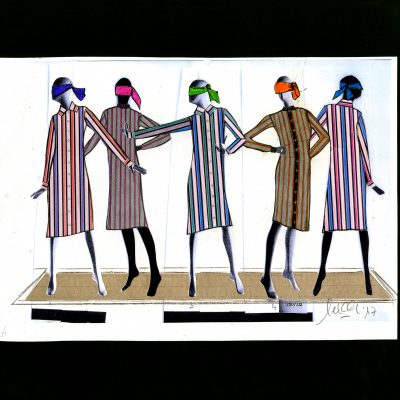‘Teddy Boy’ is the name of one of the first subcultures, originated in the post war period in Britain, and more precisely in London. The subculture came out of a wave of revivalism since, in the early 1950s, wealthy young men in London started being interested in the style of the Edwardian period: the name ‘Teddy’ is in fact short for ‘Edwardian’, and was coined in 1953 by the Daily Express newspaper.
Teddy Boys are considered the first youth group in Britain to differentiate themselves as teenagers, helping create a youth market, for fashion as well as for music, and these are only few of the many reasons why they are fundamental to understand today’s popular culture. Interestingly, not only wealthy people decided to go for this look: many are the account of a working class Edwardian style and fashion that developed in Britain during the 1950s as well. Actually, the working class Edwardian style had been on the street since at least 1951, since the heterogeneous style was more a creation of working class teenagers than to Saville Row tailors and designers.
The subculture counted girls as well. Teddy girls wore tailored jackets similar to the boys’, pencil or hobble skirts, long plaits, rolled-up American jeans and flat shoes.
The clothes of the teddy boys bore influences from different styles, and was composed by long and slim jackets — with the so-called ‘Italian cut’ – or ‘drape jackets’ part of the American zoot suit, with a velvet trim collar and pocket flaps; and high-waist ‘drainpipe’ tapered trousers. The typical outfit also included a high-necked white shirt and a slim tie or western bolo tie, and elaborate waistcoats. The shoes were usually formal brogues, oxfords, or chunky, crepe-soled shoes known as brothel creepers or beetle crushers. The most common hairstyles included long, strongly-moulded greased hair with a quiff at the front, or the so-called ‘Boston cut’, with the hair was greased straight back.
Although Teds never disappeared, the 1970s saw a rather big revival of the style, well documented by videos and photographs. In this period, Teds were opposed by other subcultures, such as the Punks, who were appropriating Teds’ gear and messing it up. Riots were started in the name of style: a testimony of the importance of the look in modern times.
